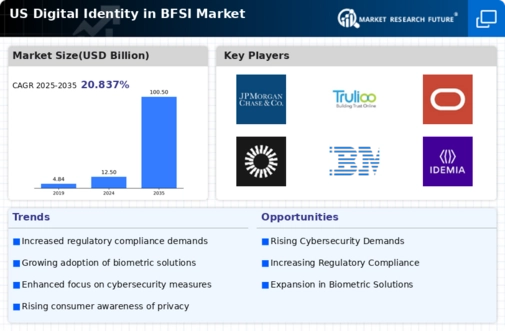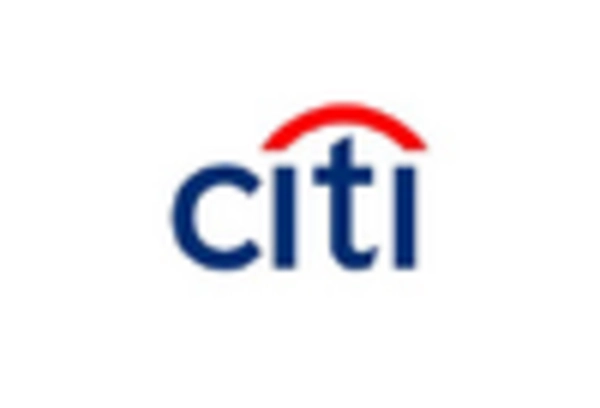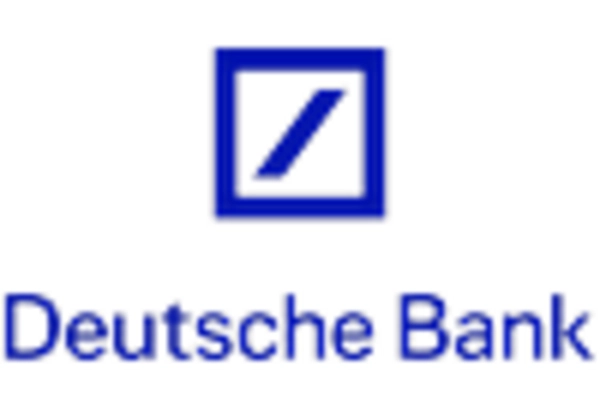Increasing Cybersecurity Threats
The digital identity-in-bfsi market is experiencing heightened demand due to the increasing frequency and sophistication of cyberattacks. Financial institutions are under constant pressure to protect sensitive customer data, which has led to a surge in investments in advanced identity verification solutions. In 2025, it is estimated that cybercrime will cost the financial sector over $6 trillion annually, prompting organizations to adopt robust digital identity solutions. This trend indicates a growing recognition of the need for secure digital identities to mitigate risks associated with identity theft and fraud. As a result, the digital identity-in-bfsi market is likely to expand as institutions seek to enhance their cybersecurity frameworks.
Consumer Demand for Seamless Experiences
As consumers increasingly expect seamless and convenient banking experiences, the digital identity-in-bfsi market is evolving to meet these demands. The rise of mobile banking and digital wallets has led to a greater emphasis on user-friendly identity verification processes. In 2025, it is anticipated that 70% of consumers will prefer digital banking solutions that offer quick and secure identity verification. This shift suggests that financial institutions must prioritize the development of efficient digital identity solutions to enhance customer satisfaction and retention. Consequently, the digital identity-in-bfsi market is likely to witness significant growth as institutions adapt to changing consumer preferences.
Regulatory Pressures for Identity Verification
Regulatory bodies in the US are increasingly mandating stringent identity verification processes to combat money laundering and fraud. The digital identity-in-bfsi market is responding to these regulatory pressures by developing solutions that ensure compliance with laws such as the Bank Secrecy Act and the USA PATRIOT Act. In 2025, it is projected that compliance-related expenditures in the financial sector will reach $30 billion, driving the demand for efficient digital identity solutions. Financial institutions are thus compelled to invest in technologies that streamline identity verification while adhering to regulatory requirements, further propelling the growth of the digital identity-in-bfsi market.
Shift Towards Decentralized Identity Solutions
The digital identity-in-bfsi market is witnessing a shift towards decentralized identity solutions, which empower individuals to control their own identity data. This trend is driven by growing concerns over data privacy and security, as consumers seek more control over their personal information. In 2025, it is estimated that the market for decentralized identity solutions will grow by 40%, reflecting a significant change in how identities are managed. Financial institutions are beginning to explore these solutions to enhance customer trust and reduce reliance on centralized databases. This evolution suggests that the digital identity-in-bfsi market will continue to adapt to the changing landscape of identity management.
Adoption of Artificial Intelligence Technologies
The integration of artificial intelligence (AI) technologies into identity verification processes is transforming the digital identity-in-bfsi market. AI-driven solutions can analyze vast amounts of data to detect fraudulent activities and verify identities in real-time. By 2025, it is expected that AI will play a crucial role in identity verification, with the market for AI in financial services projected to reach $22 billion. This trend indicates that financial institutions are increasingly leveraging AI to enhance the accuracy and efficiency of their digital identity solutions. As a result, the digital identity-in-bfsi market is poised for substantial growth as AI technologies become more prevalent.

















Leave a Comment